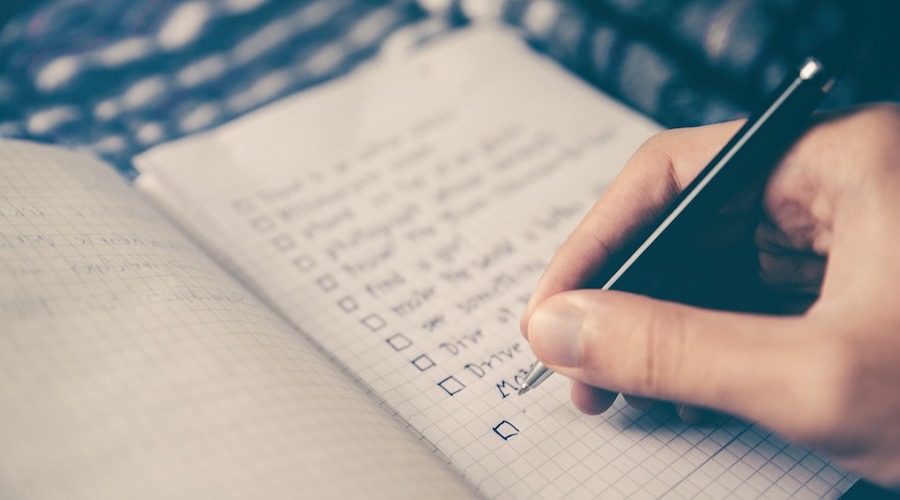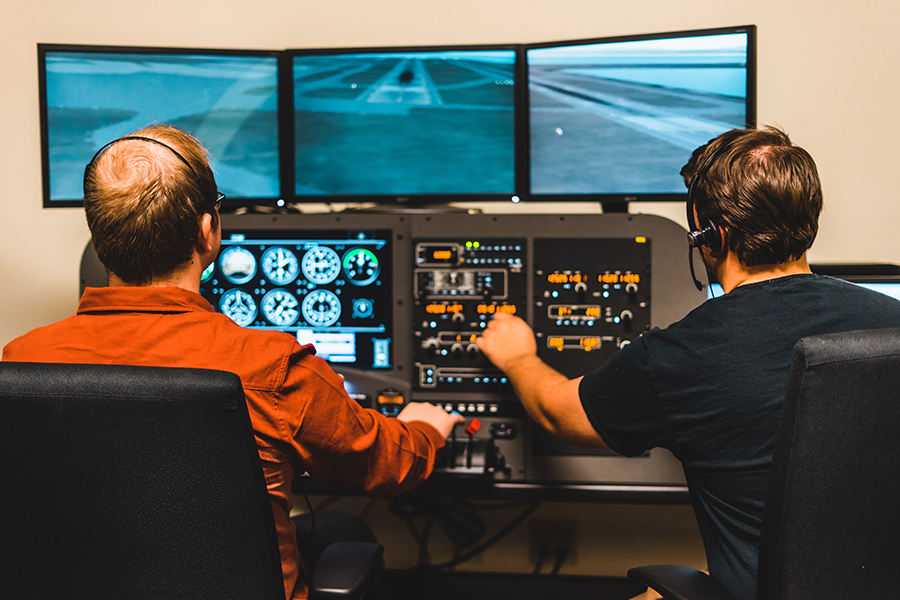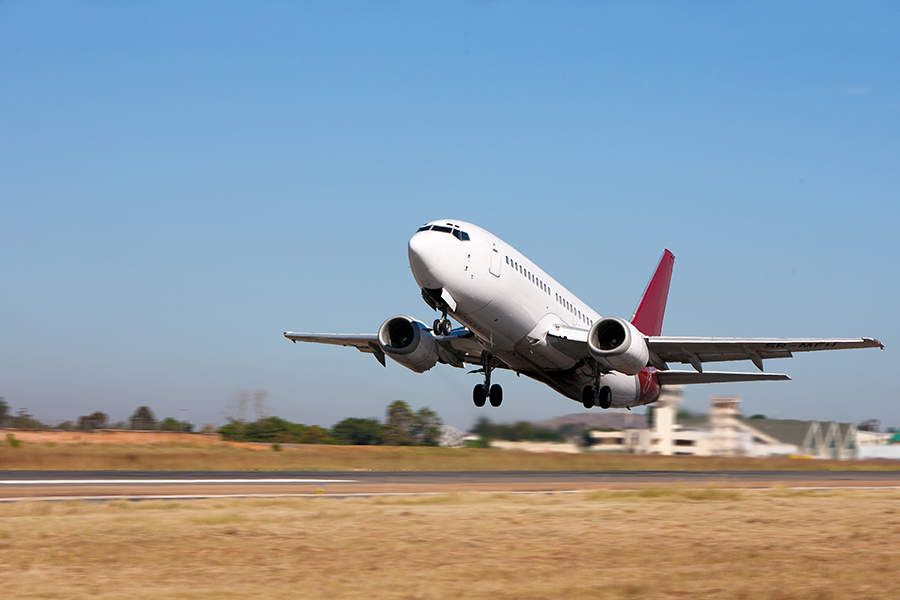-
History of Pre-Flight Checklists
-
What do Pre-Flight Checklists Look Like?
-
Example of the Cessna 152 Checklist
- 1. Before Starting Engine
- 2. Starting the Engine
- 3. Before Takeoff
-
Do Experienced Pilots do Pre-Flight Checks?
-
Doing Your Pre-Flight Checks Out Loud
-
What Might You Find During Pre-Flight Checks?
-
Other Aviation Checklists
-
Conclusion
Some people think that before taking off in an airplane the pilot simply has a casual glance at it. Perhaps he kicks the types, checks the fuel gauges to makes sure he has enough fuel, and then just departs. But this is very far from the case. All good pilots use pre-flight checklists before every flight.
A pre-flight checklist is a comprehensive list of actions that should be completed by the pilot on every flight, prior to takeoff. All pilots use them, from private pilots flying small single-engined aircraft, to military pilots, right up to airline pilots flying commercially. And pre-flight checklists have been in use in aviation for many years.
History of Pre-Flight Checklists
According to one researcher and writer, the idea of a pre-flight checklist was first introduced by management and engineers at Boeing Corporation in 1935. It followed a fatal crash of the prototype Boeing B-17 Wright Field in Dayton, Ohio. Both pilots in the aircraft were killed, and after investigation it was found that the pilots had forgotten to disengage the gust locks, devices which stop control surfaces moving in the wind while the plane is parked, prior to take-off.
After this Boeing decided to have a set list of actions to be undertaken pre-flight, so that such a thing could never occur again. So the pre-flight checklist was born. Eventually it was adopted throughout the aviation world.
What do Pre-Flight Checklists Look Like?
The appearance and length of pre-flight checklist varies enormously, from relatively simple lists of actions for single engine planes such as most private pilots learn on and fly, to extremely long and detailed lists used by airline pilots. As an example, here is an example of a pre-flight checklist for the Cessna 152, a small aircraft commonly used in flying schools for PPL training.
Actually, the C152 checklist starts with the external ‘walk around’. This is when the pilot walks carefully round the outside of the aircraft, checking everything from moving surfaces such as flaps and ailerons, to tyres to fuel. This is just summarised below as ‘Complete External Checks’, but on an actual checklist each item will be described separately and should be checked carefully.
Example of the Cessna 152 Checklist
1. Before Starting Engine
- Complete external checks.
- Seats adjusted and locked in position.
- Seat belts and shoulder harnesses fastened.
- Fuel shutoff valve on.
- Radios and electrical equipment off.
- Brakes test and hold.
2. Starting the Engine
- Circuit breakers in.
- Mixture rich.
- Carburetor heat cold.
- Prime up to three strokes.
- Throttle open 1/2 inch.
- Master switch ON.
- Beacon on.
- Propeller – area check and shout “Clear”.
- Ignition switch start.
- Adjust rpm with throttle to 1000 or less.
- Oil pressure check.
- Mixture lean one inch for taxi-ing.
- Flaps up.
- Radios on.
- Transponder on standby.
3. Before Takeoff
- Brakes set.
- Cabin doors latched.
- Flight controls free and moving correctly.
- Elevator trim moves correctly and set in takeoff position.
- Fuel valve on.
- Mixture rich, assuming takeoff below 3000 feet.
- Throttle – advance smoothly to 1700 rpm (make sure you still have the brakes applied.)
- Oil pressure and temperature should be checked and be in the green.
- Ammeter check.
- Suction gauge check in the green.
- Carburetor Heat. – Check.
- Magnetos. – Check.
- Throttle – reduce to idle.
- Flight instruments – Set as required
- Radios – set to desired frequencies.
- Brakes – release prior to taxi.
As you can see from this list, the checks fall into natural groupings. First there are items which are checked before you even think of starting the engine, then things you need to do as a part of engine start-up, and then ‘power checks’ which are done when you increase the power prior to takeoff. Then, after taxi-ing, there are actually few more items to check before the actual takeoff.
Looking at the actions in groups in this way makes the whole thing appear more logical, rather than as simply a series of disconnected actions, which is how it can seem for the novice pilot. Some of these items are obvious, and some will require explanation if they are new to the pilot. And of course, each aircraft type will have a slightly different checklist.
Do Experienced Pilots do Pre-Flight Checks?
All pilots use checklists, however experienced they are and however well they know the particular aircraft they are flying. As stated above, even airline pilots and military pilots do so, although they may have flown the particular aircraft and performed the same actions hundreds if not thousands of times before.
Sometimes private pilots decide that they don’t need to use a checklist any more, but can perform their pre-flight checks from memory. Some of them think that this makes them appear more experienced and in some way better than newer PPLs. I have seen pilots boast that they don’t need to use the pre-flight checklist.
However, the chceklist should always be used. Although it is possible to do pre-flight checks from memory, it is really not recommended. No-one is perfect, and it is very easy to forget something if you don’t have the list in front of you, as happened in the Boeing example in 1935.
Some PPL students get the idea that experienced pilots don’t need to use checklists, because these students may have an instructor who does his or her checks from memory. This is usually because instructors often have full schedules, and they can try to save time by doing checks they know well without using the checklist.
Well, it is not really a good idea for them, although they may know the checks well enough that no harm will be done. But it definitely gives the wrong impression for any student, since students learn from example at least as much as from what their instructor tells them to do.
For this reason, when I was an instructor I always followed the checklist carefully, even if I didn’t need to as I had flown that particular aircraft several times a day for months.
Doing Your Pre-Flight Checks Out Loud
Some pilots do their pre-flight checks out loud, though many do them silently. Doing them out loud is a military tradition, and there is a lot to recommend it. Indeed, it makes you less likely to inadvertently miss an item on the list. I knew an ex-military pilot who always did his checks out loud, even after he had left the military; it was second nature to him. Airline pilots also do them out loud, with one pilot ensuring that the other has actually checked everything on the list.
If you do the checks silently, it is quite possible to read one line of checks, but not actually do them in practice. It is much harder to do that if you are verbalizing the particular check. I started doing my pre-flight checks out loud some years ago, and I definitely recommend it.
What Might You Find During Pre-Flight Checks?
Usually, and hopefully, all will be well. But it is not unusual to find something wrong, for an airplane is a complex machine. Hopefully it will be something minor. Flying school aircraft are sometimes left with very little fuel in them, even if the person who last flew the aircraft thinks that there is plenty left.
Instruments can sometimes go awry, and I once had a whole instrument panel come slightly loose, probably when the aircraft was tied down in a strong wind. It was inconvenient, but not disastrous.
But my most frightening experience was when I realized during the pre-flight checks that the aircraft ailerons were jammed. If I had found that out in the air it could have been quite horrendous, even fatal. As it was, it was just rather a nuisance…and expensive.
Experiences like that make you realize that it is not worth rushing your pre-flight checks, as they could save your life!
Other Aviation Checklists
Is it only before flight that you need to do so many checks? Actually there are many checks pilots do at other times too – cruise checks, pre-landing checks, and shutdown checks, to name but a few.
There are also a large number of checks which are only used during emergencies, so that if, for instance, a pilot experiences an engine failure, there is a clear sequence of actions to be performed.
Some checks take longer to read than to actually do. I recall an airline pilot telling me about the checks required for landing in poor weather, and he described himself and his co-pilot trying to run through the list out loud and turn the relevant pages, when actually undertaking the actions was fairly quick. But it was still necessary for the pilots to read out the checks; that is simply what pilots do.
Conclusion
So I hope I have now convinced you of the importance of pre-flight checks. If you see other pilots skimping on them and simply getting in the aircraft, having a cursory look around and taking off, remember that this is not a good thing to do. Better to find out something is wrong when you are on the ground than when you are at 2000 feet!




